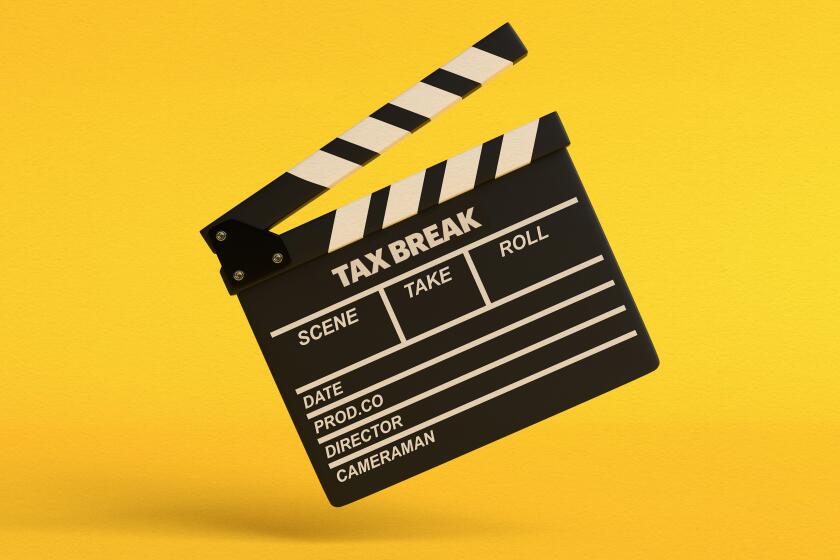Hollywood production falls below strike levels as reality TV takes massive hit

- Share via
Hollywood production was even slower this summer than it was during last year’s strikes because of a staggering decline in reality TV shoots, according to a new report.
Overall production levels were down 5% in the third quarter of 2024 compared with the same stretch in 2023, per data released Wednesday by FilmLA, a nonprofit organization that tracks on-location shoot days in the Greater Los Angeles area. FilmLA logged 5,048 total shoot days from July 1 to Sept. 30, making this the weakest quarter of 2024 so far.
The hardest-hit sector was reality TV, which wasn’t as badly affected by the walkouts because most unscripted projects were not struck; at the same time, scripted production came to a near standstill last summer. During the third quarter of 2024, however, reality TV production plummeted by 56.3% to 946 shoot days compared with the same period in 2023.
California has a film and TV production problem. Industry professionals and experts are trying to determine what can be done to fix it.
Scripted TV production rose to 758 shoot days by the end of the third quarter while still lagging 55.5% behind the five-year average. Feature film production was up 26.6% from last year with 476 shoot days in the third quarter, which is 48% lower than the five-year average.
Commercial production during the third quarter of 2024, with 814 shoot days logged, was 7.4% higher than last year and 32.6% lower than the five-year average.
All forms of production have been sluggish to rebound amid an ongoing industry contraction that predates the 2023 writers’ and actors’ strikes.
“Only a few months ago, the industry hoped we’d see an overall on-paper gain in the third quarter, due to the strike effect,” FilmLA President Paul Audley said in a statement. “Instead, we saw a pullback and loss of forward momentum, heading into the fall season that will make or break the year.”
FilmLA, which handles film permits in the Los Angeles area, is urging state officials to expand California’s movie and TV tax incentive program.
Audley once again used FilmLA’s latest update as an opportunity to call for an expansion of California’s film and TV tax credit program — which industry experts and insiders overwhelmingly agree is not generous enough to compete with incentives offered by other states and countries.
Earlier this month, FilmLA reported that California’s share of the global production market fell from 22% to 18% judging by the amount of homegrown projects released in 2022 versus 2023.
Like the Marvel Cinematic Universe or scripted series with countless spinoffs, reality TV has become more reliant on proven franchises as the industry becomes more risk-averse.
In a recent interview, Audley recommended that California’s tax credit program be expanded to cover commercials, animation and reality TV production.
“California’s film incentive is a proven jobs creator that studies show provides a net positive return on every allocated dollar,” Audley said Wednesday in a statement.
“What the program lacks is funding and eligibility criteria that reflect the outputs of the industry in 2024. ... just as our competitors continue to innovate, California must do the same.”
More to Read
Inside the business of entertainment
The Wide Shot brings you news, analysis and insights on everything from streaming wars to production — and what it all means for the future.
You may occasionally receive promotional content from the Los Angeles Times.














